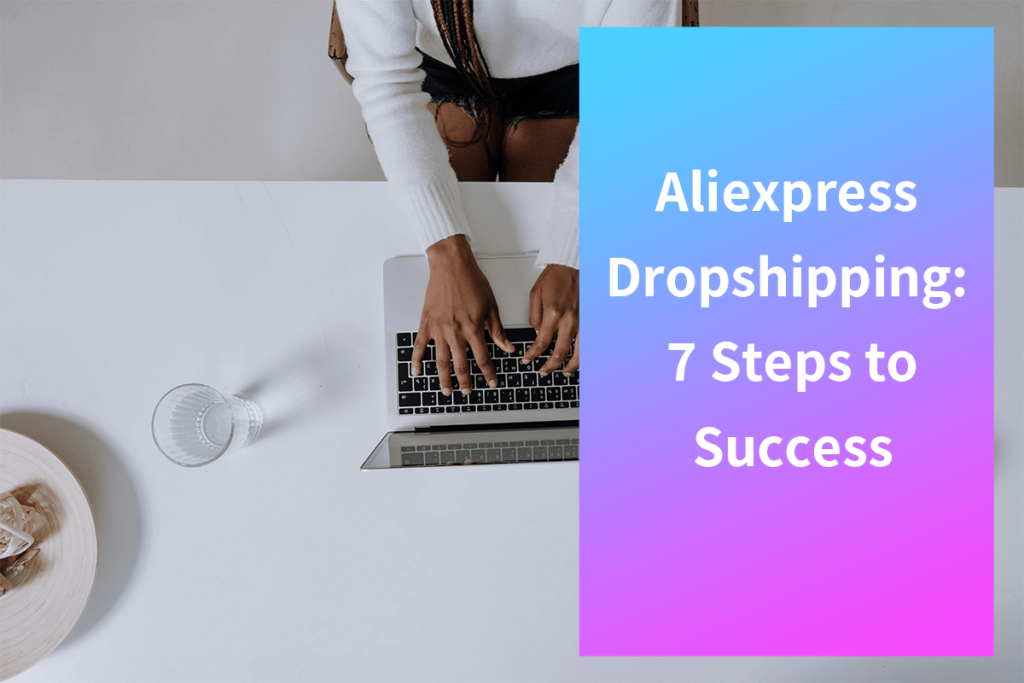Amazon vs eBay: Which Platform Should You Sell On in 2025?

Thinking of starting an online store? You’re probably stuck between two giants: Amazon and eBay. They both look great on the surface—but which one is really right for your business?
In this guide, we’ll break down the key differences between Amazon and eBay—from fees and product types to shipping, returns, and more. We’ll also walk you through the pros and cons, so you can make a smart choice that fits your goals.
Immergiamoci.
Amazon vs eBay: A Deep Comparison
Business Models: Amazon vs eBay
At first glance, Amazon and eBay both look like massive online marketplaces. But once you dig deeper, you’ll see they run on two very different business models — and that can impact how you sell and grow your store.
Amazzonia
Amazzonia launched in 1994, and while it’s a platform for third-party sellers, it’s also a retailer itself. In other words, Amazon sells its own products alongside yours. That means you’re not just competing with other sellers — you’re also up against Amazon.
Let’s say you’re selling a water bottle. If Amazon offers a similar one at a lower price, chances are most customers will buy theirs instead. It can be tough to stand out.
But here’s a bit of good news: since 2023, Amazon has started reducing the number of products it sells under its own private-label brands, according to The Wall Street Journal. That gives third-party sellers more breathing room — though the competition is still fierce.
eBay
eBay, founded in 1995, takes a different approach. It doesn’t sell anything itself. The platform simply connects buyers and sellers. Think of it as a giant online flea market or auction house — one where you’re not competing with the platform, just other sellers.
Buyers can place bids or buy items directly. This open format gives you more control over your listings, pricing, and sales strategy.
Product types: Amazon vs eBay
Amazon and eBay both let you sell a wide range of products — but there are some key differences.
What You Can Sell
Amazzonia
On Amazon, new, everyday products are the main focus. Think of stuff like:
- Phone chargers
- Kitchen tools
- Articoli per animali domestici
- Beauty and skincare products
Used products can be sold too, but usually only through a special program called Amazon Renewed. It’s limited to sellers who meet specific quality and performance standards — so not everyone can join.
eBay
eBay, on the other hand, is much more open when it comes to secondhand goods. In fact, used items are a huge part of the platform. According to Statista, around 80% of eBay buyers in both the U.S. and the U.K. bought pre-owned products in 2020.
So, in short, both platforms support new and used items. Amazon is often best for new items, and eBay gives you another chance to reach a wider audience.
What You Can’t Sell
When it comes to restricted items, Amazon is much stricter. There are entire categories — like beauty, groceries, and jewelry — that require special approval to sell. Some things are outright banned, including: alcohol, tobacco, firearms, prescription drugs, hazardous chemicals, etc. Even a single mistake in listing a restricted product can lead to account warnings, suspensions, or permanent bans.
eBay also bans certain items, but the rules are a bit more relaxed.
Before listing anything, it’s smart to check the official restricted products page on both platforms:
Selling Fees: Amazon vs eBay

Fees can make or break your profit margin — especially in eCommerce. So how do Amazon and eBay compare when it comes to what you actually pay to sell?
Amazon Fees
Amazon’s fee structure is more complex and generally more expensive, especially if you use their fulfillment service (FBA). Here’s what sellers usually pay:
- Commissione di segnalazione: A percentage of each sale, typically 8% to 15%, depending on category.
- Monthly Subscription Fee: Two plans — individual plan charges $0.99 per item sold, professional plan charges $39.99 monthly.
- FBA Fees: If you use Fulfillment by Amazon, you pay fees based on product size and weight, plus storage fees.
- Other fees: Refund processing, closing fees, and long-term storage penalties may also apply.
eBay Fees
eBay’s fee structure is easier to understand — and in most cases, lower. Here’s what you’ll usually pay:
- Insertion Fee: You get 250 free listings monthly; after that, it’s $0.35 per listing.
- Final Value Fee: Around 13.25% of the total sale price, including shipping, varies by category.
- Commissione per l'elaborazione dei pagamenti: This is a small percentage of the total sale, automatically deducted when the buyer pays.
- Optional Fees: Promoted Listings (you choose the ad rate); Store Subscription (optional, gives you fee discounts and perks)
Unlike Amazon, eBay doesn’t charge fulfillment or mandatory subscription fees. You pay only for what you use, which can be easier for small sellers.
Per saperne di più: Temu vs Amazon: prezzo, qualità e spedizione a confronto
Fulfillment Methods: Amazon vs eBay

Shipping is definitely one of the most important parts of selling online. Let’s look at how fulfillment works on each platform.
Amazzonia
Amazon offers two main options for fulfillment:
- FBM (Fulfilled by Merchant): You keep your products, pack orders, and handle shipping yourself. This means you have full control — but also full responsibility for things like customer service and returns.
- Logistica di Amazon (Fulfilled by Amazon): This is the go-to choice for many serious sellers. You send your products to Amazon’s warehouses, and they take care of picking, packing, shipping, customer service, and returns. It’s a huge time saver and gives your products Prime eligibility, meaning faster shipping for customers.
But FBA isn’t free — you pay fees for storage, handling, and shipping. Plus, you give up some control over how your products are shipped and managed.
eBay
eBay is much simpler when it comes to fulfillment — it’s all seller-fulfilled. There’s no official eBay fulfillment program like Amazon’s FBA.
When you sell on eBay, you list your items, a buyer orders, and you ship it yourself. You can also use a third-party fulfillment service to help with storage and delivery — especially useful if you’re dropshipping.
Ecco dove Sup Dropshipping comes in. If you’re doing Dropshipping di eBay and want less hassle, we’ve got you covered. We handle the storage, packaging, and fast shipping — so you can focus on growing your store.
Target Audience: Amazon vs eBay

Before picking a platform, it’s smart to know who shops there. After all, putting the product in front of the wrong audience is like selling snow boats at the beach.
Amazzonia
Amazon’s shoppers mostly want convenience and speed. According to Statista, in 2022 about 72% of people aged 18 to 29 said they shopped on Amazon in the past year. Many are Prime members who expect fast, free shipping and reliable service.
A 2024 survey found that nearly 35% of Gen Z and about 33% of boomers in the U.S. had Amazon Prime. This means they trust brands that offer fast delivery and a professional experience. So, if you’re selling on Amazon — even if your brand is new — your listings need to look trustworthy with clear photos, detailed descriptions, and good reviews.
eBay
eBay’s audience is a bit different. In 2023, around 39% of U.S. eBay shoppers were aged 18 to 24, and 36% were 25 to 34. Compared to Amazon, eBay buyers tend to be more deal-focused and a little older.
Many come to eBay looking for rare, used, or refurbished items at a discount. They don’t mind waiting a few extra days if it saves them money. eBay is also popular for collectors and bargain hunters.
In short, Amazon is where people go to buy new products quickly and expect a smooth experience. eBay is where buyers look for deals, unique items, or secondhand goods, often willing to trade speed for savings.
Lettura consigliata: 25 Best Sites Like eBay to Sell Your Stuff
Return Policy: Amazon vs eBay

No seller loves returns, but they’re part of the game. A smooth return process keeps buyers happy, but too many returns can cut into your profits. So, how do Amazon and eBay compare when it comes to return policies and seller protections?
Amazon Return Policy
Amazon is well-known for its A-to-Z Guarantee, which makes returning items pretty easy for buyers. Most products have a 30-day return window, and during the holidays, this period often extends — sometimes until the end of January.
If you use Logistica di Amazon (Fulfilled by Amazon), Amazon handles returns for you. They take the item back, sometimes inspect it, and often refund the buyer automatically. For low-cost items, buyers might even get a refund without returning the product. This helps keep customers happy but means sellers may lose money or never get the item back.
If you sell with FBM (Fulfilled by Merchant), you manage returns yourself. You can set some rules, but Amazon expects quick responses. If a buyer files an A-to-Z claim or complains, Amazon can step in and issue a refund even if you disagree.
eBay Return Policy
eBay offers sellers more flexibility in setting return policies for cases when buyers simply change their minds. You can decide whether to accept returns, how long the return window is (14, 30, or 60 days), and who pays return shipping.
But if the buyer claims the item arrived damaged, isn’t as described, or is the wrong product, eBay’s Money Back Guarantee usually requires you to accept the return — even if your listing says “no returns.”
When a buyer opens a return request, you get notified and have three business days to respond. If you don’t reply, or if eBay agrees with the buyer’s complaint, they can step in and sometimes refund the buyer without asking for the item back — similar to Amazon.
One difference is that sellers on eBay can deduct part of the refund if the returned item is used, damaged, or altered. But if the item comes back in perfect condition, you can’t take anything off the refund.
The pros and cons of selling on Amazon and eBay
Sometimes, all you need is a side-by-side view to make the right choice. Here’s a quick breakdown of the pros and cons of selling on Amazon and eBay — in two simple tables.
Selling on Amazon: Pros and Cons
| Professionisti | Contro |
|---|---|
| Massive customer base with strong buying intent | Higher fees (referral, FBA, subscription, etc.) |
| Trusted by buyers — great for new brands | You might compete directly with Amazon itself |
| FBA handles storage, shipping, and returns | Less control over your own fulfillment and returns |
| Prime shipping boosts sales potential | Strict rules and metrics can risk your account |
| Great for scaling fast | Harder for beginners without budget or experience |
Selling on eBay: Pros and Cons
| Professionisti | Contro |
|---|---|
| Lower, more transparent fees | Smaller daily traffic compared to Amazon |
| You control your return policy | No built-in fulfillment like FBA |
| Option to sell via auction or fixed price | Reputation takes time to build through reviews |
| Popular for used, rare, and discounted items | Less brand-building potential |
| Flexible for part-time or casual sellers | Slower shipping may affect buyer experience |
FAQs about Amazon vs eBay
1. Is Amazon safer than eBay?
In most cases, yes. Amazon has tighter rules, fast shipping, and a strong return system. It steps in quickly when things go wrong. eBay is still safe, but it leaves more to the seller.
2. Do more people shop on Amazon or eBay?
Amazon wins here. It has way more daily shoppers, especially in the U.S. People go to Amazon for fast shipping and brand-new stuff. eBay has loyal users too, but it’s more for finding used items, collectibles, or deals.
3. Who charges more to sell, eBay or Amazon?
Amazon usually costs more. Between referral fees, FBA charges, and subscription costs, the total can add up fast. eBay’s fees are simpler and often lower. You don’t have to pay a monthly fee unless you choose a store plan. If you’re just starting out, eBay might be easier on your wallet.
4. How Many People Shop on eBay and Amazon?
Amazon has over 310 million active users worldwide. In the U.S. alone, it’s the go-to site for online shopping. eBay has around 132 million buyers globally. It’s still big, but smaller.
Pensieri finali
Choosing between Amazon and eBay really comes down to your product type, budget, and how much control you want as a seller. Amazon gives you access to a huge buyer base and fast fulfillment options, but at a higher cost and more rules. eBay is more flexible and cheaper, with a crowd that loves deals and rare finds—but you’ll have to handle more yourself.
If you’re planning to start dropshipping on either platform, Sup Dropshipping can help you get started faster — and smarter. We handle the sourcing, packing, and shipping, so you can stay focused on growing your store. Whether you’re using Amazon’s FBM or eBay’s seller-fulfilled model, we’ve got your back with reliable service, a steady supply of products, and quality you can count on. Contattaci today — let’s make your business easier.
Circa l'autore

Maggio
May è un blogger di Sup Dropshipping con oltre 5 anni di esperienza nell'eCommerce. La passione di May per l'eCommerce la spinge a rimanere aggiornata sulle ultime tendenze e a condividere la sua esperienza con te attraverso il suo blog. Nel tempo libero le piace leggere un romanzo o chiacchierare con gli amici.





Lascia un commento